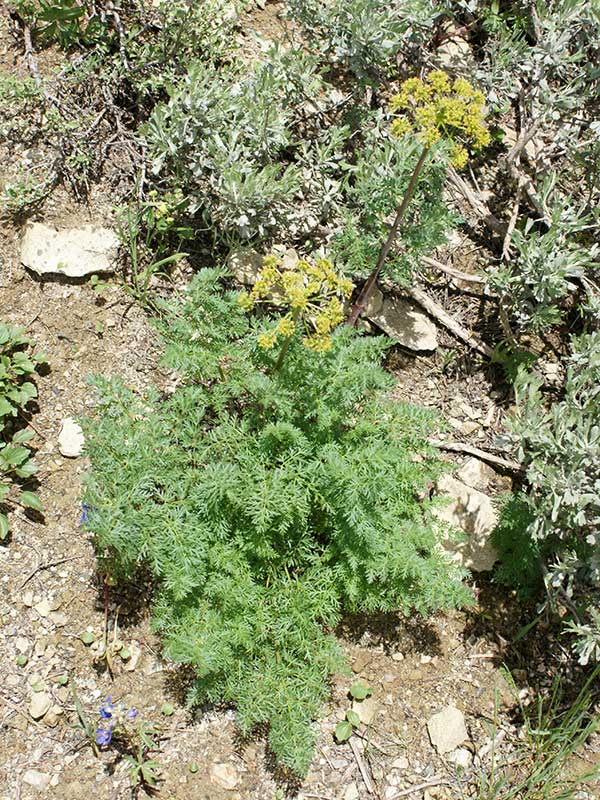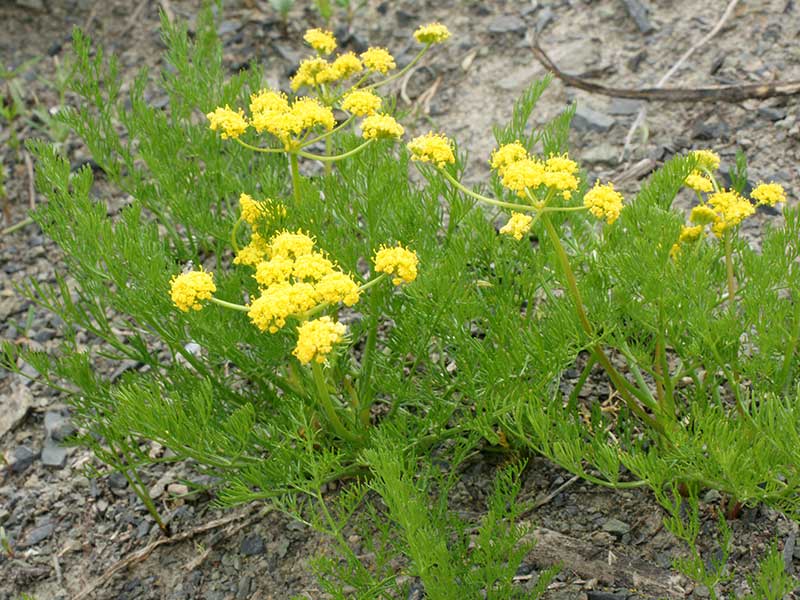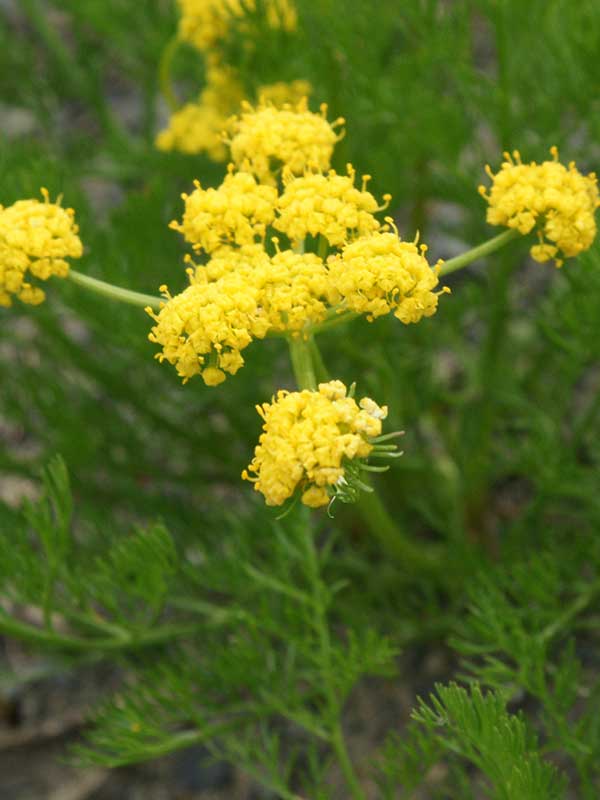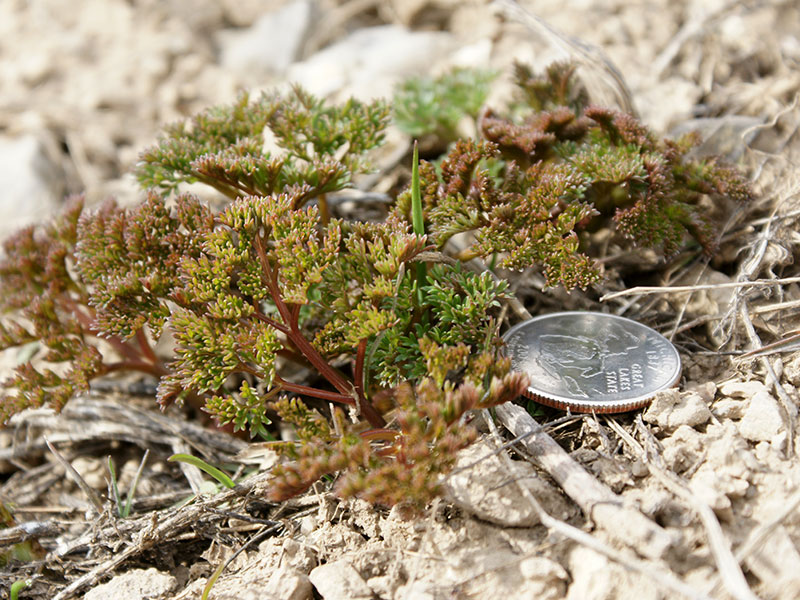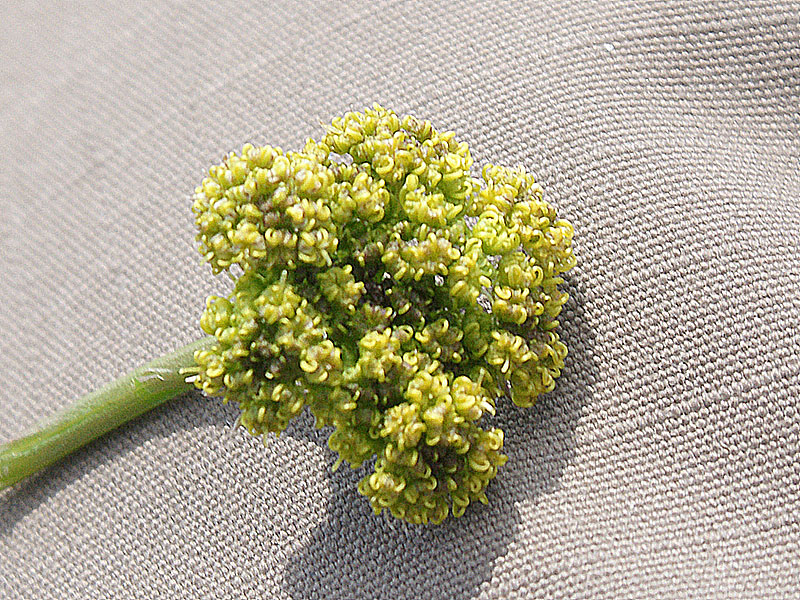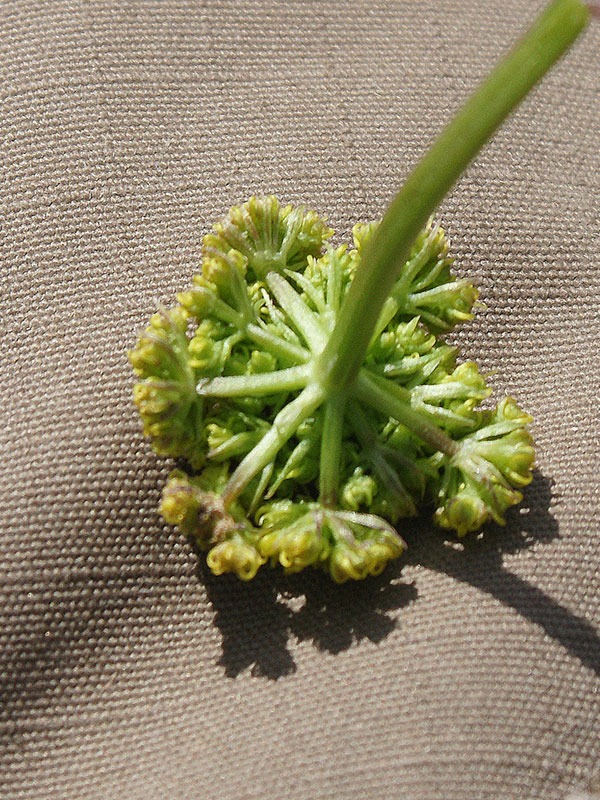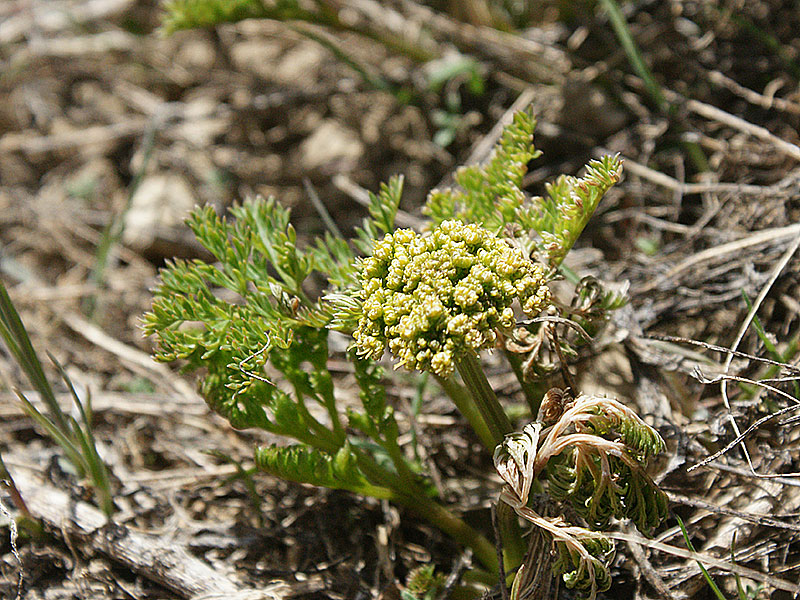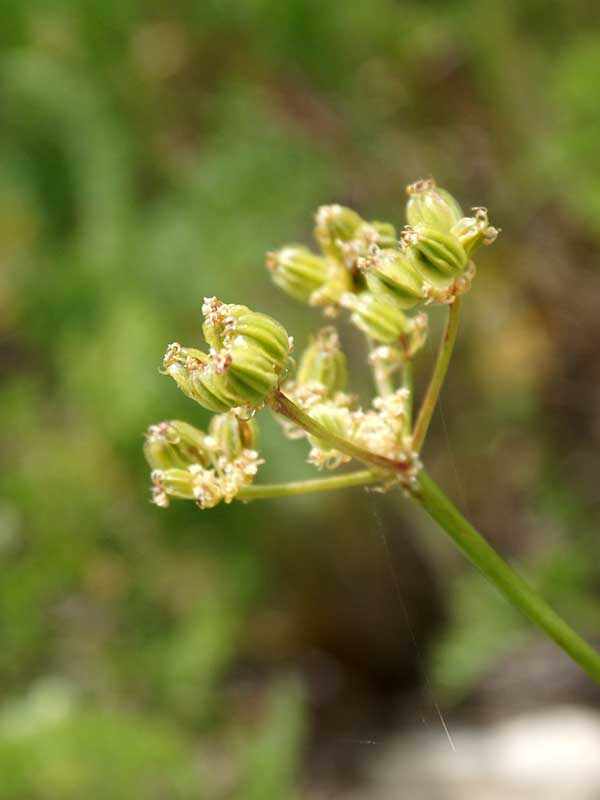Lomatium dissectum / fernleaf biscuitroot
- blooms soon after snowmelt
- yellow or purple-ish flowers in compound umbels
- highly divided, fern-like leaves
- rocks, rocky soils, sagebrush communities
Also known as: fern leaf desert parsley, lomatium, fern leaf biscuitroot
Fernleaf biscuitroot begins its growth very early in the spring, rising from a perennial, thickened woody taproot or caudex. It often appears just following snowmelt, and rapidly begins to flower. While it can tolerate good soil and is sometimes cultivated as a medicinal herb, it generally grows on open talus, bedrock and scree. Locally, it hangs around with sagebrush, e.g. up behind Cedron cemetery.
The flowers of fernleaf biscuitroot are yellow to purple-ish, in compound umbels with 10 to 30 rays. Each of the umbellets (secondary umbels) includes some 10 to 30 flowers, with some being simply male and others hermaphroditic. The fruits, which ripen later in the summer are striped, and shaped like pumpkin seeds.
The taproot of this biscuitroot is large and sometimes branching. Both its length, and its diameter contribute to starch and nutrient storage, making the species highly competitive against weeds. It can cover huge areas, but it doesn’t take over because of its size and phenology.
With its early phenology, fernleaf biscuitroot provides crucial early forage for many species including cattle, sheep, horses, deer and antelope and elk. It is considered a very valuable forage species due to its large stature (on better soils) and high biomass production levels. It is also an important species for early spring pollinators.
Interesting bits – The cooked leaves, taproots and seeds of this plant were used for food by indigenous peoples. Water extracts were used as piscicides (fish killers). Lomatium dissectum also has established medicinal value – root extracts have completely inhibited the cytopathic effects of the rotavirus responsible for most early-childhood diarrhea. They are also active against Mycobacterium tuberculosis, the causal agent for tuberculosis, and Mycobacterium avium which causes chronic pulmonary and lymph system diseases.
| Color | |
|---|---|
| Family | |
| Blossom size | |
| Inflorescence size | |
| Inflorescence type | |
| When? | |
| Where? |
